Long-distance hikes and pilgrimage routes are becoming increasingly popular in Italy, leading to the creation of new trails. The Via Matildica del Volto Santo is a little-known itinerary connecting Mantua to Lucca across the Apennines. A journey in the footsteps of Countess Matilde di Canossa, admiring hilltop castles, the charming scenery, and tasting delicious food.
There are so many Italian pilgrimage routes crisscrossing the peninsula that choosing one is not easy. I grew increasingly fond of slow travel and hiking, a trend shared by more and more travelers.
In 2019 I discovered the beautiful Way of St Francis from Rimini to La Verna, an exciting multi-day hike amid stunning scenery and passing through some of the most enchanting towns in Emilia Romagna. 2020 was the year of the Cammino di Dante (or Dante’s Way), following the route connecting the places visited by the Italian poet during his exile from Florence, including a scenic train ride in Italy you shouldn’t miss.
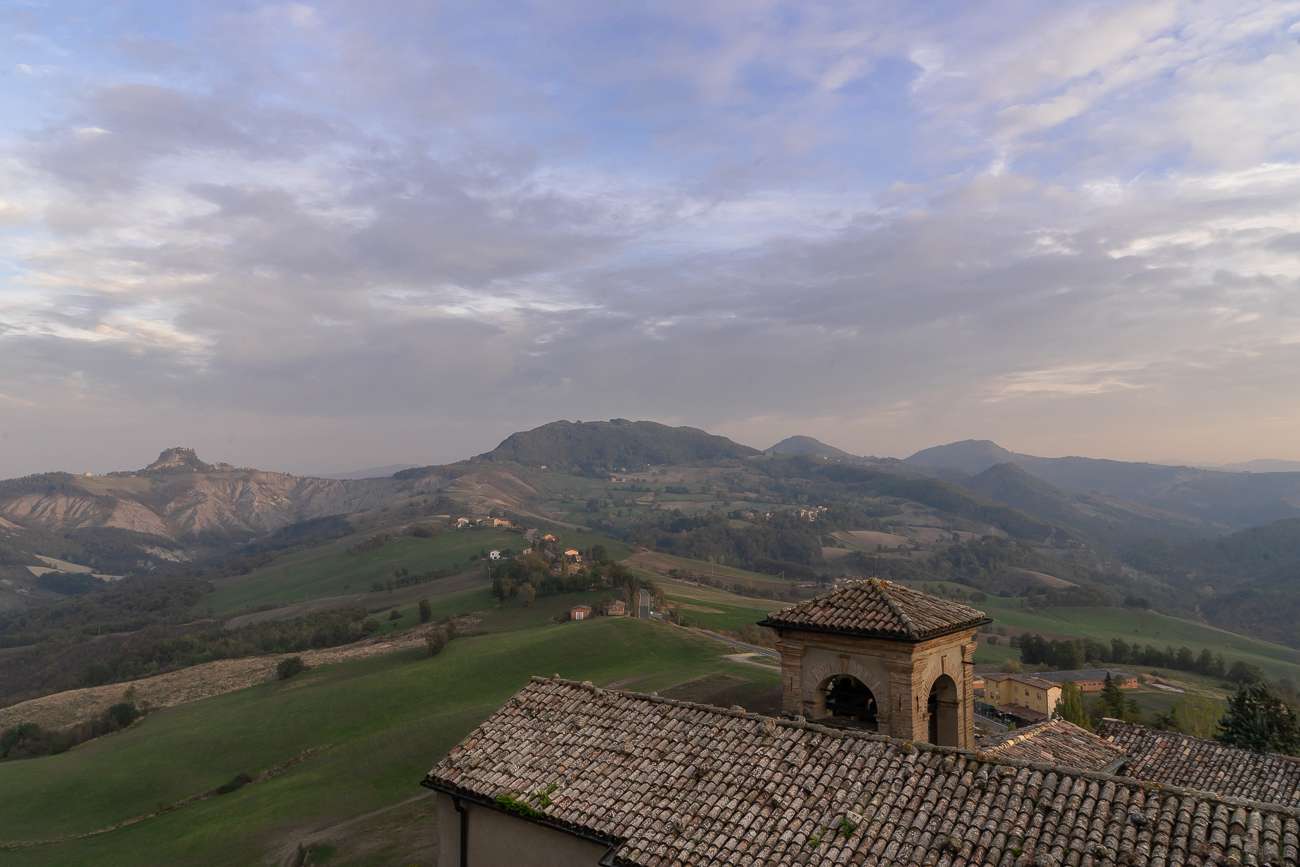
This year, in autumn, I discovered the Via Matildica del Volto Santo, actually the portion in Emilia Romagna, since the itinerary covers three regions. Another great find, a part of Italy off-the-beaten-track, with a unique flavor. The route covers the lands once ruled by Countess Matilde di Canossa, an extraordinary woman in history.
Who was Matilde di Canossa (1046 – 1115)? A unique historical persona
Not many women left their mark in history. One of them is Matilde di Canossa – also known as Matilda of Tuscany – who lived between the 11th and 12th centuries. Without a doubt, Matilde was one of the most intriguing figures of the middle ages. This powerful and charismatic woman was anything but the innocent and helpless damsel depicted in many medieval novels. Matilde di Canossa possessed exceptional warrior skills, which she deployed to support the church against the Empire.
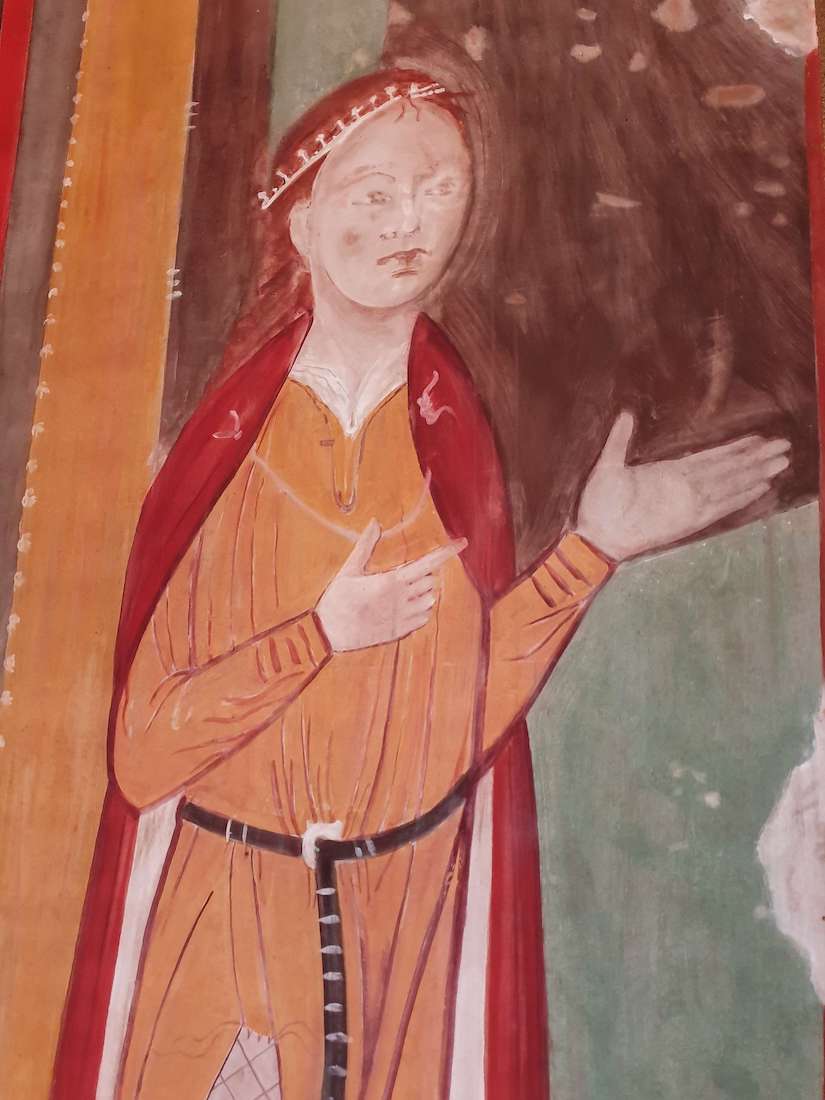
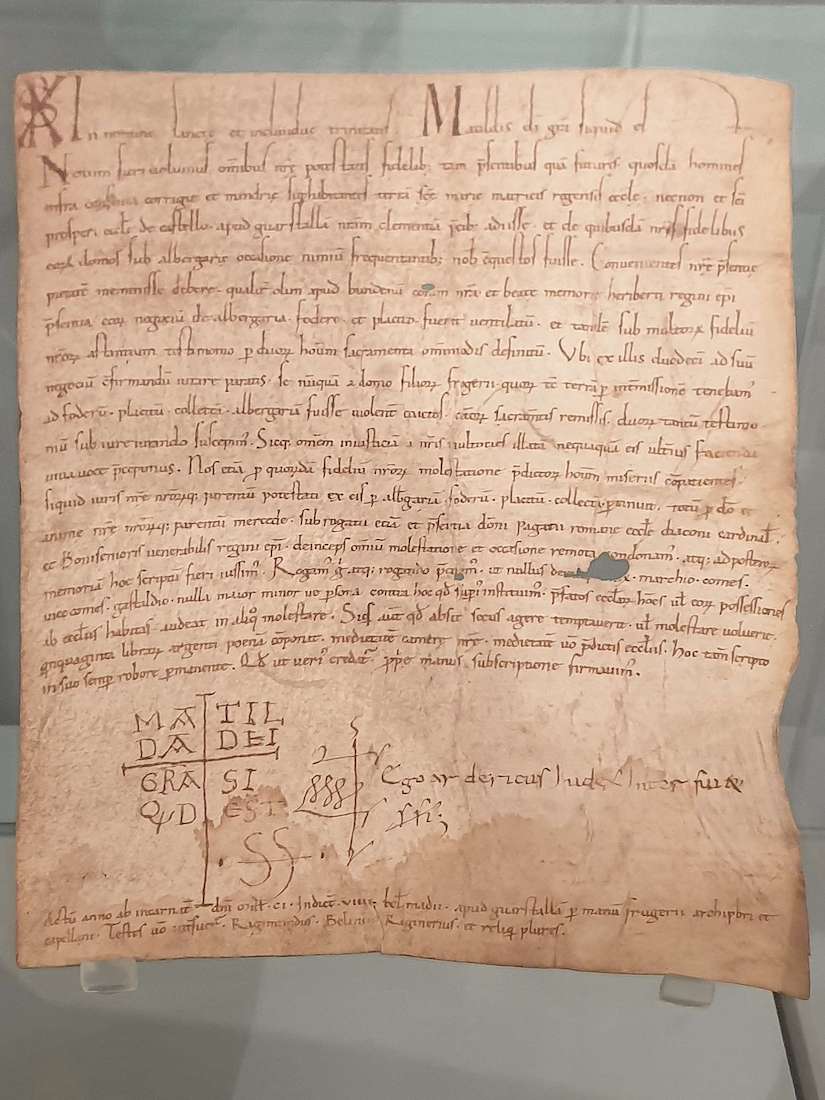
Matilde’s dominion, in between the territories of the Holy Roman Empire and those controlled by the church, held a strategic geographical position. Her fiefdom covered a vast area encompassing the regions now called Lombardy, Emilia Romagna, and Tuscany. Therefore, the sovereignty of Matilda was based on a dense strategic network consisting of castles, outposts, and isolated towers, a system that allowed close control of the communications network.
The road to Canossa and the Investiture Controversy
Matilde played a crucial role in the conflict between the papacy and the Holy Roman Empire. The dispute, known as the Investiture Controversy, centered on the Emperor’s power to nominate and install clergy members: abbots, bishops, and, ultimately, the Pope.
In 1076 Pope Gregory VII fervently supported the papal primacy over any other power, thus coming into severe conflict with the Emperor Henry IV of Franconia. Henry IV reacted by declaring that he no longer recognized Gregory VII as Pope and asked him to resign. In response, Gregory VII excommunicated the Emperor, stripping him of his royal dignity and freeing his subjects from the oath of loyalty, de facto preventing him from exercising his royal power. However, Gregory offered a glimmer of hope: he would withdraw the deposition if the Emperor repented. Rebellions from several German princes ensued Henri IV’s ex-communication, increasingly undermining his power. Eventually, at the beginning of 1077, the Emperor decided to apologize and traveled to Italy to meet the Pope.
That’s when Matilde di Canossa comes into the picture. A strong supporter of the papacy, Matilde hosted Pope Gregory VII in her Canossa Castle. The fortress, perched atop a steep hill, was one of the most impregnable in Italy, thus the perfect site for a meeting between the Pope and the Emperor. Henri IV reached the castle on the 25th of January 1077, but Gregory refused him entry. The Emperor waited three days as a sign of penance, barefoot in the snow, wearing only a cilice. This episode became one of the most famous of Middle Ages history and is remembered as the Walk to Canossa or the Humiliation of Canossa.
Via Matildica del Volto Santo: Highlights
The Via Matildica del Volto Santo, or Sentiero Matilde, follows Matilde di Canossa’s footsteps: a real journey through time among villages, castles, and monasteries, away from mass tourism.
Still little-known, this long-distance hike crosses three regions: Lombardy, Emilia, and Tuscany. It starts in Mantua, where Matilde was probably born, from the historic Palazzo Te, and arrives in Lucca, at the beautiful Cathedral of San Martino. The church houses The Holy Face (il Volto Santo), the wooden crucifix which, according to tradition, was not made by human hand. The Holy Face is an ancient object of veneration and a famous pilgrimage destination in the Middle Ages.
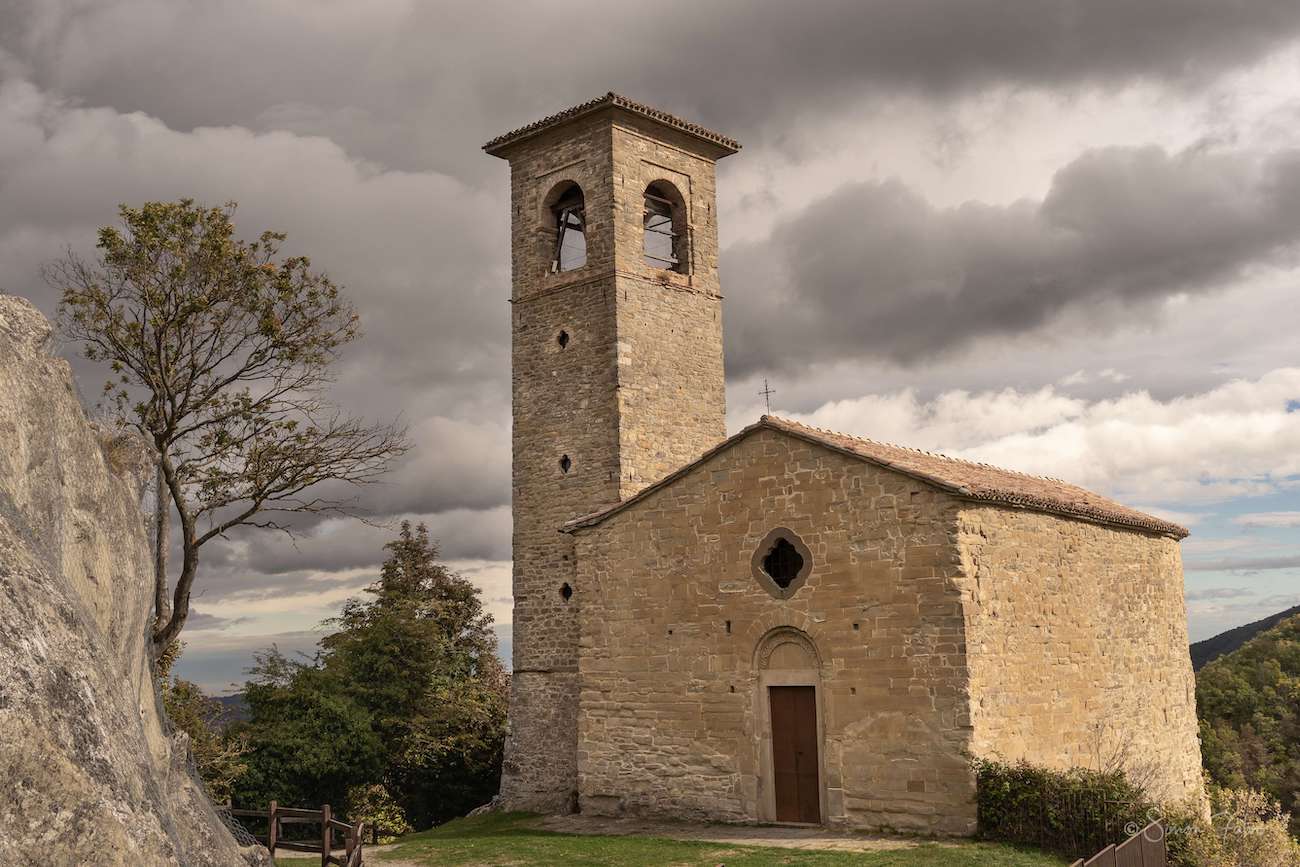
The itinerary is about 285 kilometers long divided into 11 stages, starting from the Po valley to reach the Garfagnana valley after crossing the hills and mountains of the Tuscan-Emilian Apennine National Park.
The trail passes through the territories once ruled by Matilde di Canossa, where many traces of her heritage are still visible. Being a very long route, you can choose to hike only a few stages. To make things easier, the Via Matildica del Volto Santo is divided into three sections, which roughly correspond to the regions Lombardy, Emilia Romagna, and Tuscany.
- the Way of the Most Precious Blood: from Mantua to Reggio Emilia in 3 stages
- the Way of San Pellegrino: 5 stages connecting Reggio Emilia to San Pellegrino in Alpe
- the Via del Volto Santo: from San Pellegrino in Alpe to Lucca, in 3 stages.
Why a journey along the Via Matildica del Volto Santo?
You don’t have to be a religious person to follow a pilgrimage route. Actually, I’m not a believer, but that didn’t prevent me from hiking the Way of St. Francis, and I loved it!
The same happened with the Via Matildica del Volto Santo, which allowed me to discover a lesser-known area of Northern Italy. Life flows at a slower pace in that neck of the woods, and when you get to meet locals, you’ll be impressed by how attached they are to Matilde di Canossa. They’ll proudly tell you many anecdotes, some of which indeed happened, others resorting more to legends passed down over the centuries.
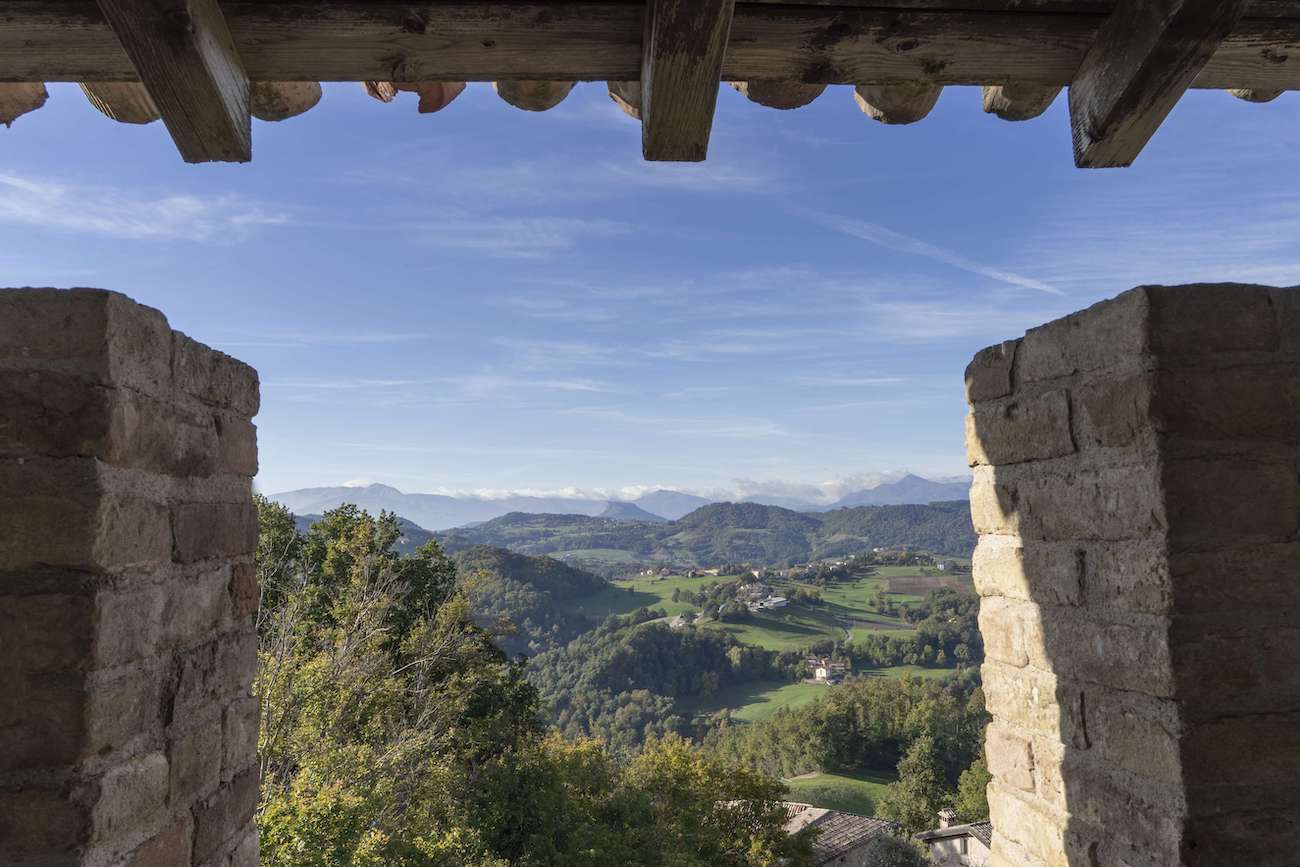
There are several ways to travel the Via Matildica del Volto Santo. You can hike or bike the entire route or only parts of it. Or you can discover it as a road trip from beautiful Mantua to charming Lucca, driving along secondary roads, up and down the hills and the mountains, amid lovely scenery.
Many hostels for pilgrims are set in idyllic places, so peaceful that they’re perfect for regaining your balance. So, unless staying at a hostel is something you’d never do, I strongly recommend you spend at least one night at one of them.
Via Matildica del Volto Santo in Emilia Romagna: 3-day itinerary
Day 1
Diocesan museum in Reggio Emilia
Our itinerary to discover the Via Matildica del Volto Santo in the Emilia Romagna region started in Reggio Emilia, at the Museo Diocesano in the Bishop’s palace. The museum houses some of the most beautiful medieval artifacts created in the area: crafted sandstone capitals, Byzantine frescoes, mosaics, and other historical finds. However, the jewel in the crown is the parchment signed by Matilde di Canossa in 1101, with her unique signature developing in the quarters of a cross.
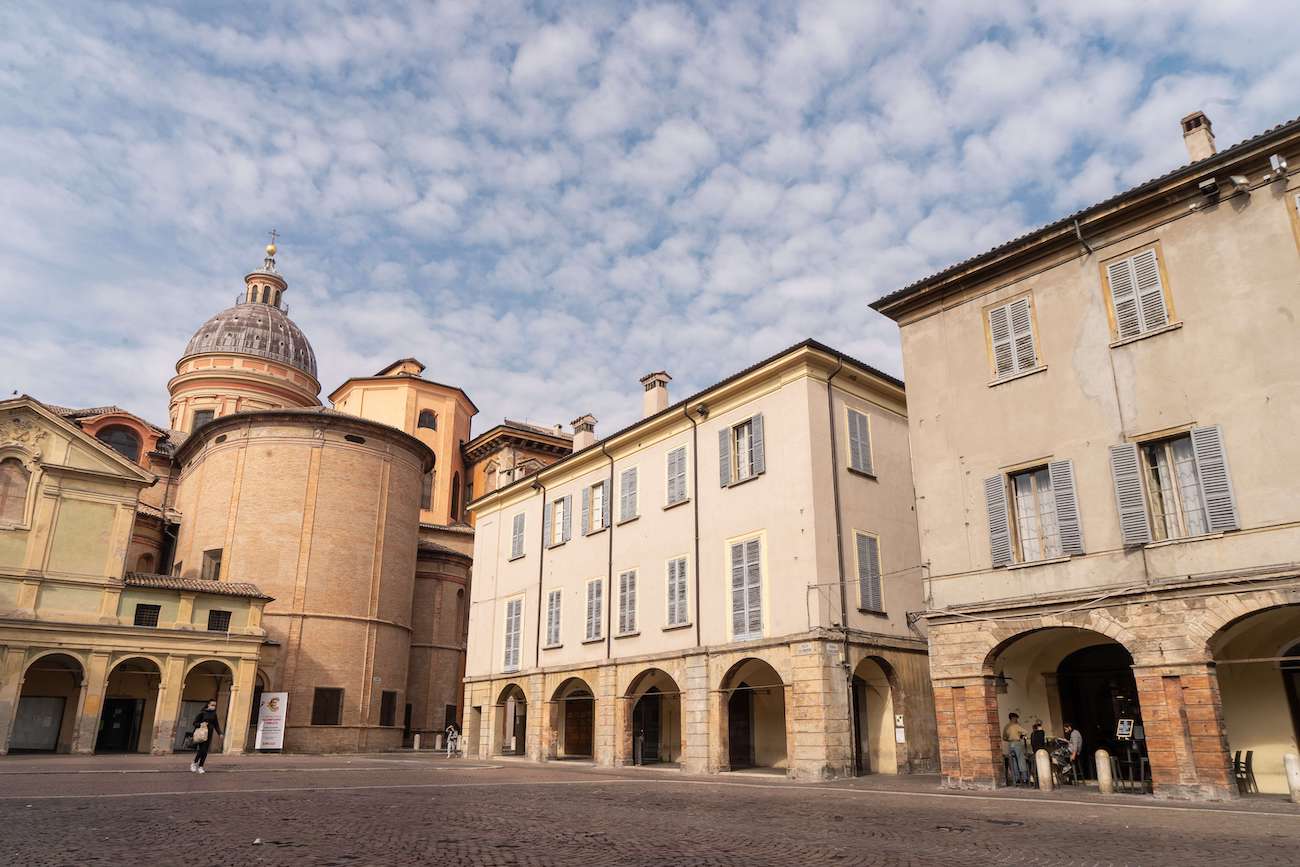
Castle of Canossa
We continued our journey towards the Canossa castle, where the Humiliation of Canossa took place. Sadly, the original building has almost nothing left. However, the ruins perched atop a steep hill have a romantic flair and symbolic relevance. Also, by looking at the deep ravines surrounding the rock, it’s easy to see why Canossa was Matilde’s best stronghold.
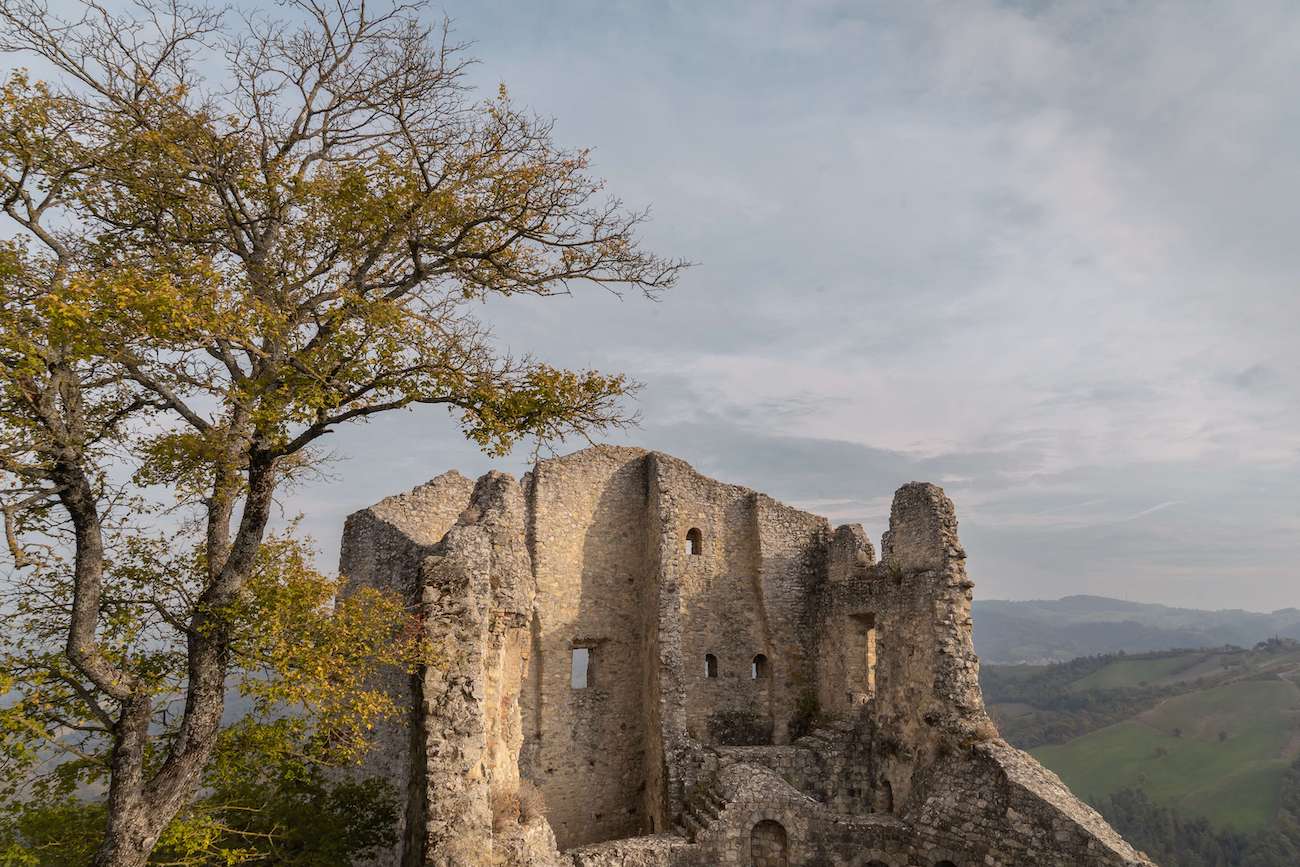
Castle of Rossena
The nearby Rossena castle was part of a defensive network of forts and towers. The leading experts in military strategy of the Middle Ages artfully designed the architecture to make the fortress impregnable. In particular, Rossena’s primary function was to defend Canossa, the main seat of Matilde’s power.
A stone arch and a short climb lead to the castle of Rossena and its esplanade. From the top of the dungeon, the view of the surrounding hills and, further away, the higher mountains of the Apennines is just beautiful. Rossena underwent several changes through the centuries. Some of them are still visible, like the frescoes dating back to the 17th and 18th centuries. Don’t miss a stroll on the walls walk, especially at sunset.
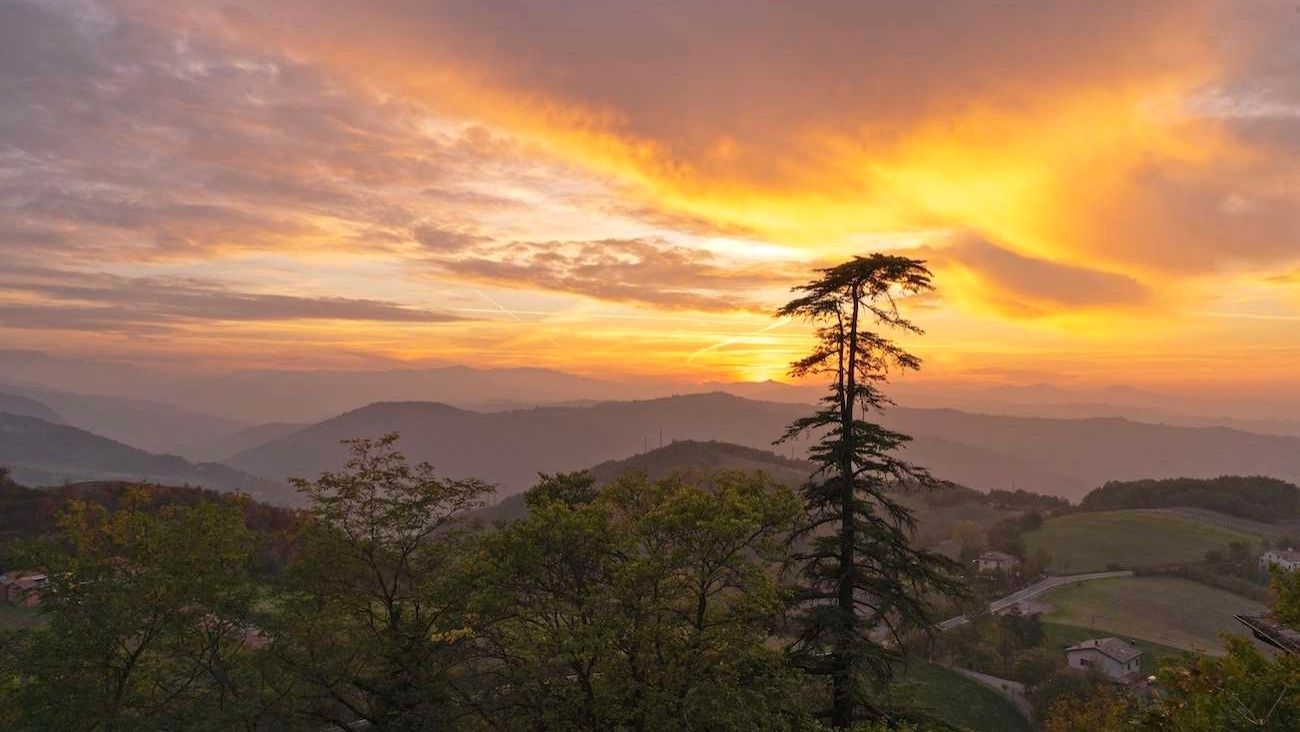
Following a recent refurbishing, Rossena now houses a hostel where guests can spend the night, an experience I strongly recommend.
Day 2
Castle of Sarzano
New day, new castle. On our second day on the Via Matildica del Volto Santo, we headed to the Sarzano fort. The position of Sarzano, straddling the Parma – Lucca route (medieval alternative of the Via Francigena), made it an essential defensive spot. Sarzano guaranteed the control of the pass roads, allowing a safe transit point for goods, people, and news.
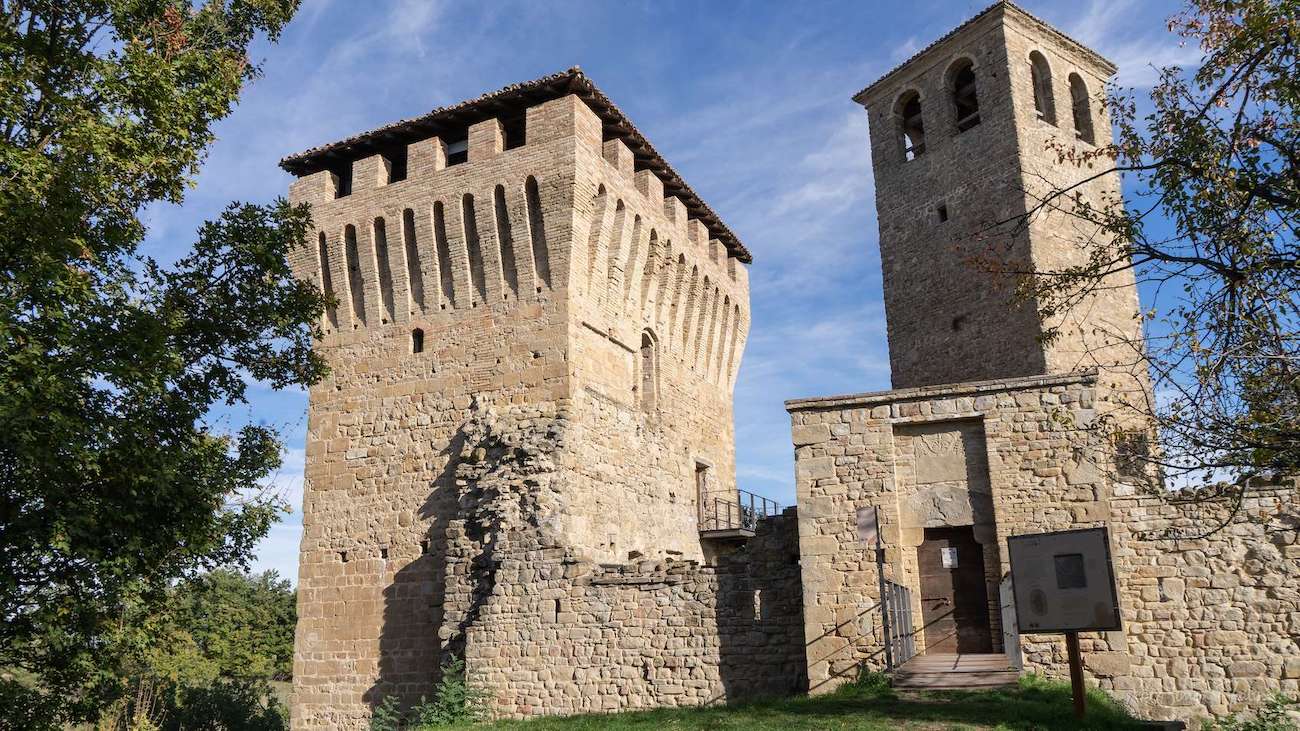
According to the archaeologist and art historian Corrado Ricci, who visited the Castle of Sarzano in 1885:
“it’s is one of the most elegant and best-preserved fortresses of the Emilian Apennines […] it appears wonderfully picturesque, nor do the old possessions of Countess Matilde perhaps have a more artistic castle “.
It’s hard not to agree with him.
A must is to climb to the top of the beautiful dungeon (Torrazzo), to admire the 360 degrees view of the gentle hills and their beautiful colors.
Pietra di Bismantova
Although technically speaking not on the Via Matildica del Volto Santo long-distance trail, the Stone of Bismantova is not only worth a short detour, but an absolute must-see. Having noticed it multiple times from the castles on the lands once controlled by Matilde di Canossa, this isolated flat and steep spur – reminding me of the Tepui in Venezuela – enticed our curiosity.
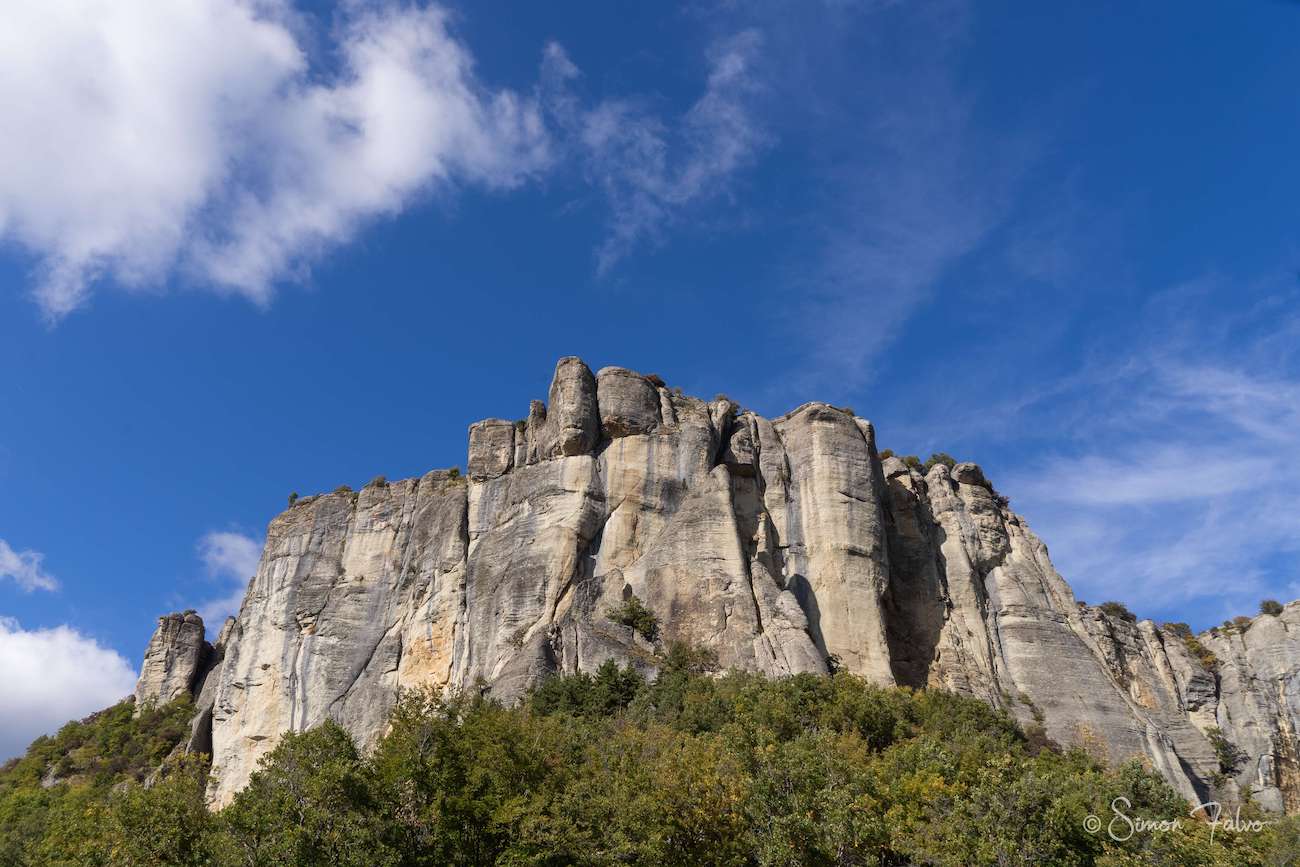
The close-up look at Bismantova was nothing short of breathtaking. Over the last fifty years, its cliffs have become a favorite spot for climbers, but it’s the beauty of its shape, standing out against the blue sky, that stroke my imagination. There was only time for a short walk, but there’s one thing I’m sure about: I want to go back to Bismantova!
Pieve di San Vitale
After a short walk in the chestnut groves, dear to Matilde of Tuscany, we reached the hostel by the San Vitale parish church in Carpineti. Laying isolated on a verdant pasture calling for peace and meditation, the Pieve di San Vitale is the perfect spot to rest and overnight after a day of hiking.
Here, religious beliefs don’t matter (at least, in my opinion). It’s an idyllic spot, and everyone can fill it with their meaning. It’s a place for introspection, prayer, peace, or relaxation. It doesn’t matter, as long as you enjoy its blissful atmosphere.
At the Pieve di San Vitale, you’ll experience a warm welcome and delicious homemade food, including local specialties. What you’ll eat depends on the season. That’s why you might end up having a yummy dinner different from the delectable one I had. There, I discovered something I had never heard about before (and I’m Italian!): Savurett! This preserve, made from local apples or pears and typical from this area of the Emilia Romagna region, has multiple uses. We tasted Savurett with cheese, and it was… heaven!
Day 3
Castle of Carpineti
There’s no doubt that what strikes us in any of our travels is subjective. However, the hike from the Pieve di San Vitale to the Carpineti castle was one of the highlights of the short tour to discover the Via Matildica del Volto Santo in the Emilia Romagna region. Surrounded by the warm colors of autumn, we hiked the trail, stopping here and there to look at the smooth rolling hills typical of this area.
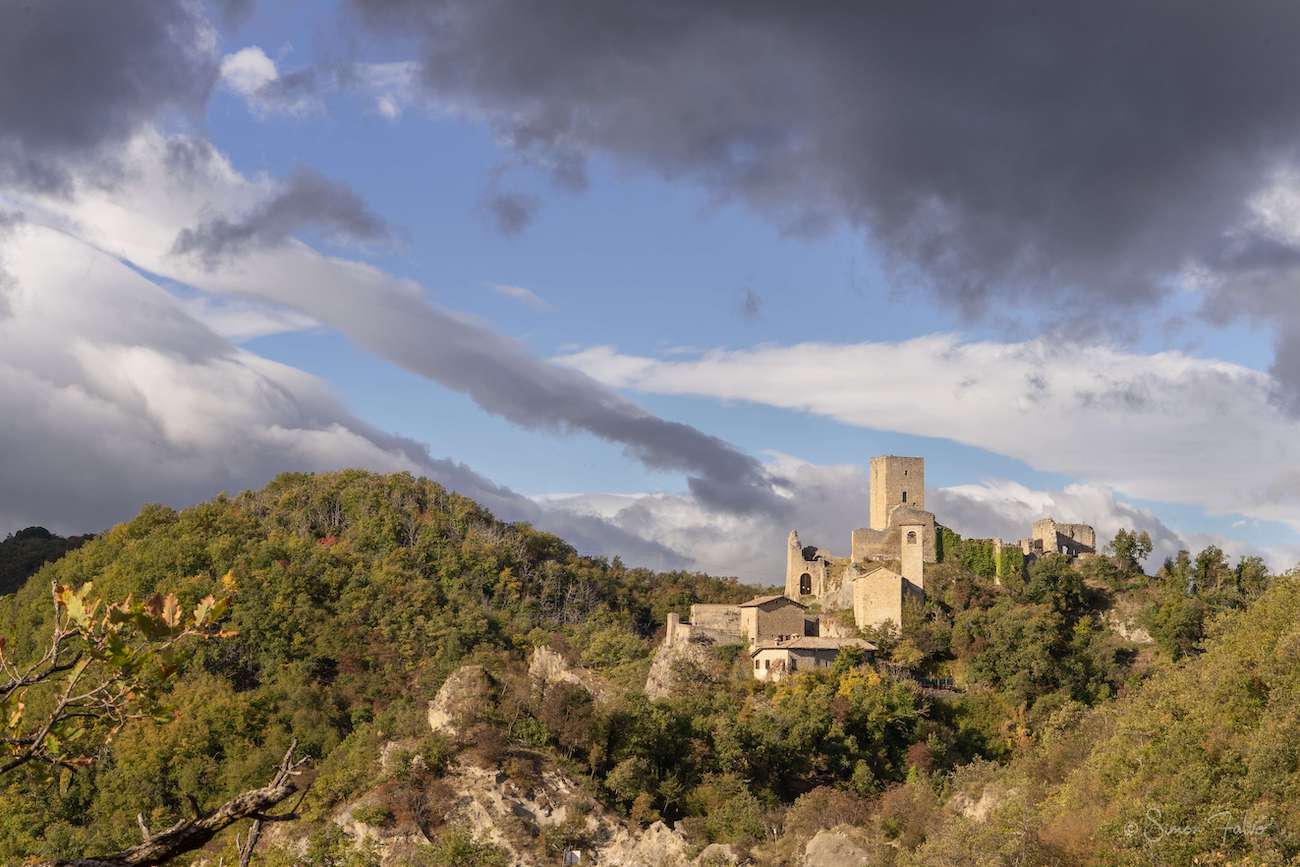
After about one hour, the climax. Suddenly, the castle of Carpineti appeared from afar, dominating and fascinating. There was not a soul around. And, for a while, it felt like stepping back in time. Carpineti was one of Matilde di Canossa’s favorite castles, where she hosted Pope Gregory VII and other high religious dignitaries to oppose the heretics. Much of the castle was destroyed over the centuries, and today there are only ruins left. But the view of Carpineti, approaching while hiking, was mesmerizing.
Pieve di Santa Maria di Castello
Our day ended at Santa Maria di Castello, an isolated Romanesque parish church on the top of a hill overlooking the town of Toano. The parish is one the oldest and most significant religious buildings of Romanesque architecture in the Reggio Emilia area.
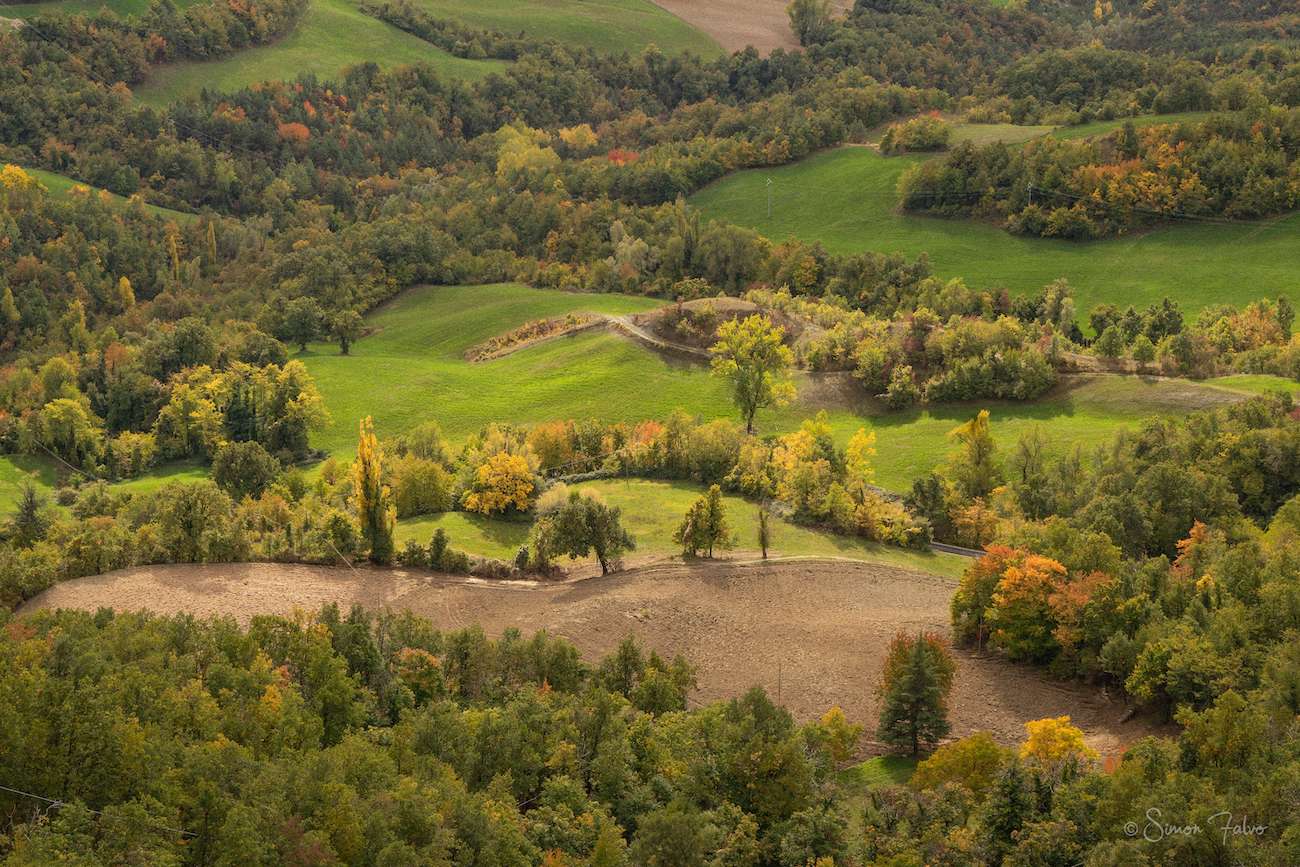
Although its origins date back to the end of the 10th century, during the dominion of the Countess Matilde di Canossa, the parish underwent a restoration that gave it its current appearance.
Inside, Santa Maria di Castello is small and intimate and holds the simple beauty typical of the Romanesque style, with ornaments limited to the lovely carved capitals and a few other elements. Outside, the parish dominates the beautiful landscape of the Apennines, offering a glimpse of a lesser-known Italy.
***
Even limited to the stretch crossing the Emilia Romagna region, there’s more to the Via Matildica del Volto Santo than what I’ve seen. For sure, it was a foretaste of another exciting long-distance hike and pilgrimage way in Italy. The Via Matildica del Volto Santo is now added to my ever-growing wish list.
Pin for later!
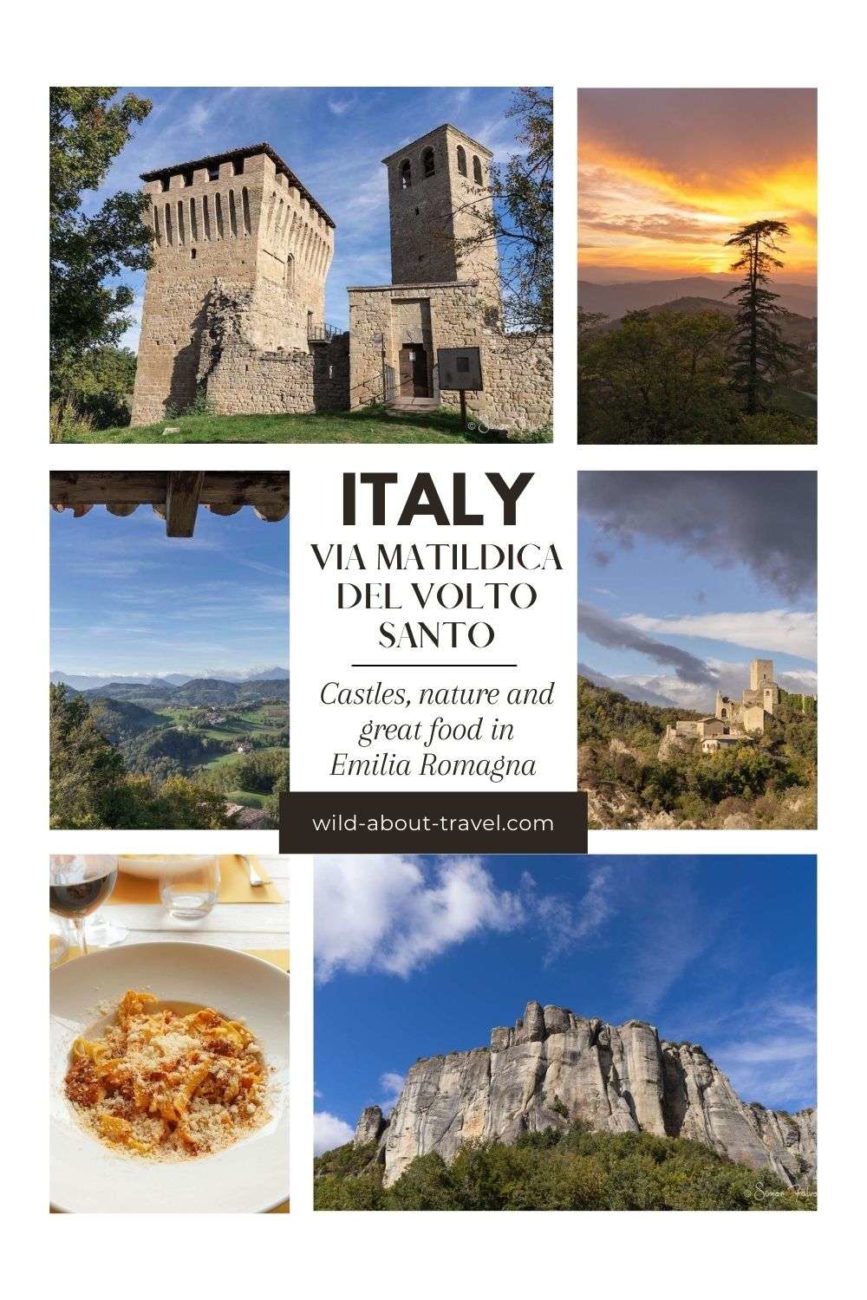
_______
Note: This post derives from a paid collaboration with iambassador and Emilia Romagna Turismo. While the objective is to promote slow travel and lesser-known destinations in this beautiful region, all opinions are mine. The post also contains a few affiliate links. If you do any booking or purchase, I get a small commission at no extra cost for you.


